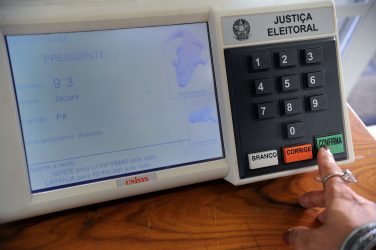When Brazil implemented affirmative action at its federal universities in 2012, the policy prompted a public debate that largely resembles the debate over affirmative action in the United States.
Brazil’s affirmative action policy requires every federal university to reserve at least half of all seats for students from certain groups. Out of that half, about half of the seats go solely to Black, mixed and Indigenous Brazilians. The other half go to low-income public-school students. Other universities are free to set their admissions policies.
Like many Americans, some Brazilians worried that affirmative action would reduce the quality of education in public universities. Some were concerned that only the more privileged members in the targeted groups would benefit and that affirmative action wasn’t worth it. Others doubted that beneficiaries could keep up academically and feared that their peers would suffer as a result.
As researchers who study college admissions, economics and the equity of social interventions and policies, we took a critical look at the effects of affirmative action in Brazil. To do this, we examined prior research, as well as the effects of affirmative action on student learning and future earnings.
In America, these outcomes are difficult to study because, prior to the use of race being banned in college admissions, schools implemented affirmative action as they saw fit. In Brazil, all federal universities had to implement affirmative action the same way.
Brazilian federal universities are some of the best in the country. Even more importantly, they are tuition-free. They are the preferred universities for most high school students and their families. Historically, mostly well-off students attended these universities.
Through our research, we concluded not only that Brazilians’ fears about affirmative action lowering the quality of the nation’s universities were largely unwarranted, but also that across most measures the policy has proved to be quite beneficial.
Specifically, we found that:
• Those admitted to universities via affirmative action performed quite well in their studies. By the time they graduated, their grade-point averages were not much different from the GPAs of other students. In the most selective majors, the disparities in GPAs that existed when students began their studies had largely disappeared by graduation.
• Students admitted through affirmative action did not hamper the learning of their peers. Sometimes, they outperformed peers who entered college the regular way without affirmative action. This is a reminder that traditional admissions processes may not be as meritocratic as some people may think.
• Students admitted via affirmative action were 7% more likely to work as managers or directors later in their careers than if the policy were not in effect. Such students also end up with many more years of education than they would otherwise. This means that many of these students would not pursue a higher education degree at all if these places were not reserved for them.
Implications for the United States
As elite colleges and universities in the U.S. grapple with how to achieve diversity after the Supreme Court banned the use of race in college admissions, we believe our findings bear particular relevance.
Some Americans argue that schools can achieve diversity through race-neutral policies. At least in the Brazilian context, we found that race-neutral policies were ineffective for achieving racial diversity.
We found that race-targeted policies were associated with a significant increase in Black students, whereas race-neutral policies didn’t affect the percentage of Black, mixed and Indigenous Brazilian students in college.
Part of the reason is because a large share of candidates, white and nonwhite, compete under income-based quotas. Thus, income-based quotas do not effect the racial composition of university students because these quotas benefit students from all racial backgrounds.
Race-based affirmative action seems necessary to achieve racial diversity, according to the Brazilian evidence. This is consistent with at least one other study from the U.S., where race-neutral policies have been shown to be less effective than those explicitly considering race.
By almost every measure studied, affirmative action in Brazil worked to generate a more diverse student body without reducing the quality of education. Even so, the inequality in Brazil’s higher education system remains.
In 2000, out of the 853,000 students enrolled in tuition-free public universities, around 596,000 were white and 239,000 were Black. By 2010, the system had expanded to 1,788,000 places, with white students numbering 1,063,000 and Black students 689,000. Brazil’s congress successfully made affirmative action mandatory in part because of the large impact of the many-but-scattered initiatives by public universities in the 2000s.
As the U.S. grapples with issues of equity and access to higher education, Brazil’s experience imparts valuable lessons. There, race-based affirmative action policies promote diversity and the values of equal opportunity that American universities like to espouse.
Race-based affirmative action can effectively increase enrollment of underrepresented minorities without compromising academic performance. This is something that income-based quotas may not be able to accomplish. Further, the Brazilian experience shows that these policies do not negatively impact other students.
Now that the U.S. courts have banned the use of race in college admissions, college and university leaders must find and adopt new ways to make their campuses more diverse. How to achieve that may be a challenge, but it seems to remain a worthwhile pursuit.
Neil Lewis Jr. is an Associate Professor of Communication and Social Behavior at Cornell University
Inácio Bó is an Associate Professor of Economics at University of Macau
Rodrigo Zeidan is a Professor of Practice at NYU Shanghai and Fundação Dom Cabral at NYU Shanghai
This article was originally published in The Conversation. Read the original article here: https://theconversation.com/what-the-us-can-learn-from-affirmative-action-at-universities-in-brazil-208647








